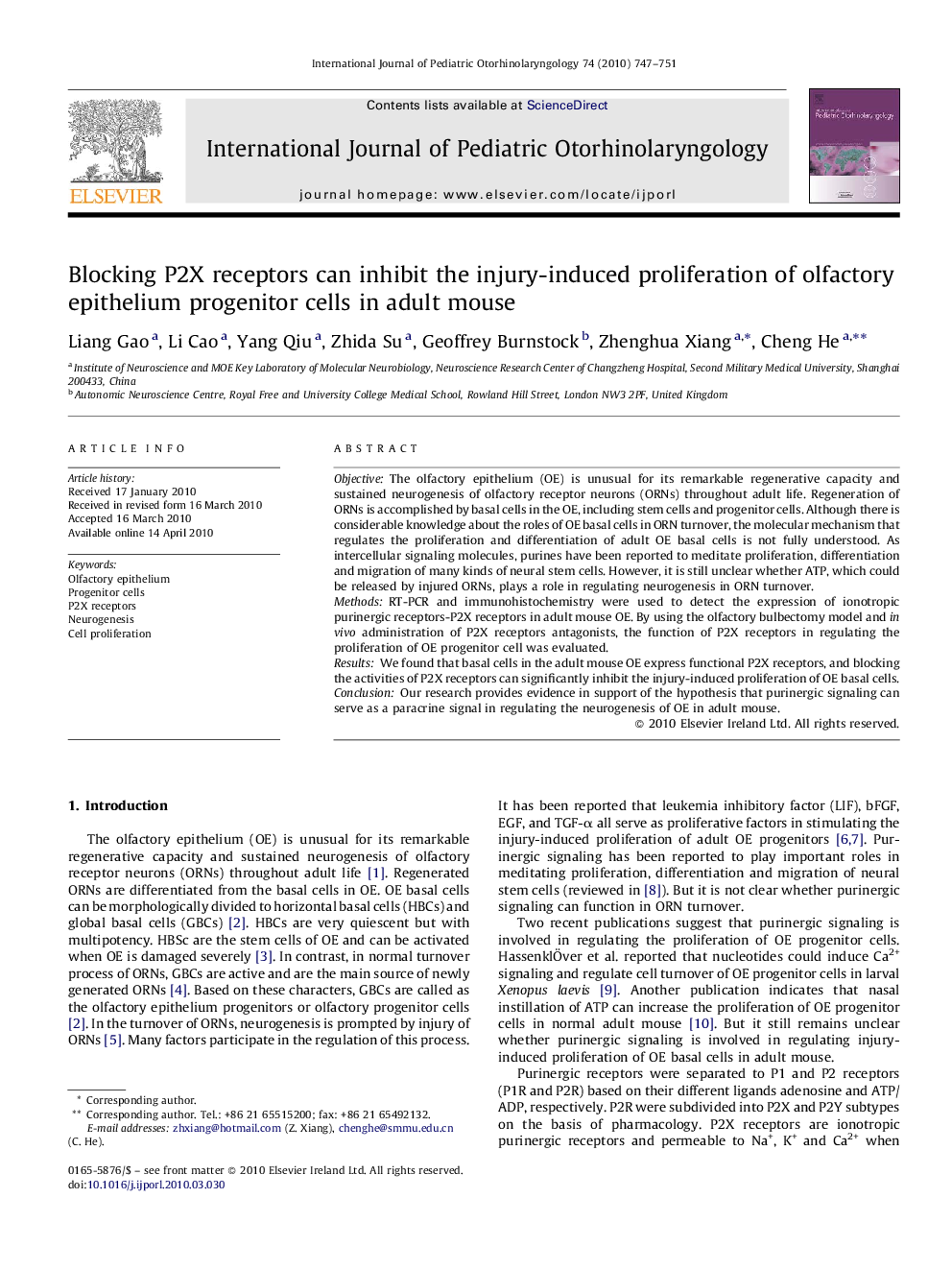| Article ID | Journal | Published Year | Pages | File Type |
|---|---|---|---|---|
| 4112842 | International Journal of Pediatric Otorhinolaryngology | 2010 | 5 Pages |
ObjectiveThe olfactory epithelium (OE) is unusual for its remarkable regenerative capacity and sustained neurogenesis of olfactory receptor neurons (ORNs) throughout adult life. Regeneration of ORNs is accomplished by basal cells in the OE, including stem cells and progenitor cells. Although there is considerable knowledge about the roles of OE basal cells in ORN turnover, the molecular mechanism that regulates the proliferation and differentiation of adult OE basal cells is not fully understood. As intercellular signaling molecules, purines have been reported to meditate proliferation, differentiation and migration of many kinds of neural stem cells. However, it is still unclear whether ATP, which could be released by injured ORNs, plays a role in regulating neurogenesis in ORN turnover.MethodsRT-PCR and immunohistochemistry were used to detect the expression of ionotropic purinergic receptors-P2X receptors in adult mouse OE. By using the olfactory bulbectomy model and in vivo administration of P2X receptors antagonists, the function of P2X receptors in regulating the proliferation of OE progenitor cell was evaluated.ResultsWe found that basal cells in the adult mouse OE express functional P2X receptors, and blocking the activities of P2X receptors can significantly inhibit the injury-induced proliferation of OE basal cells.ConclusionOur research provides evidence in support of the hypothesis that purinergic signaling can serve as a paracrine signal in regulating the neurogenesis of OE in adult mouse.
